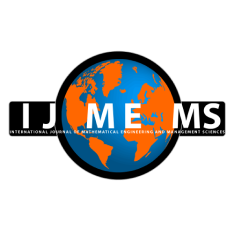Neha Khanna
Department of Applied Mathematics, Gautam Buddha University, Greater Noida, Pin Code- 201308, India.
Pratiksha Saxena
Department of Applied Mathematics, Gautam Buddha University, Greater Noida, Pin Code- 201308, India.
DOI https://dx.doi.org/10.33889/IJMEMS.2019.4.2-027
Abstract
The aim of this paper is to propose a simulation tool: SIMFEED which can formulate balanced livestock feed mix as well as can fulfill the other objectives of the livestock industry such as nutrient variability inclusion, simultaneous achievement of multiple objectives, simulated feed mix etc. Besides the standard problem of formulating balanced livestock feed mix at minimum cost, SIMFEED can also compute feed mix to fulfill different objectives of the user. In SIMFEED, different mathematical models, algorithms and techniques were embedded to formulate balanced livestock feed mix with the consideration of various other needs of the user. SIMFEED can formulate feed mix for different weight classes of livestock. It works on the data stored in the data base as well as on the real world data. The graphical interface is also developed to compare the values of objective function achieved using different techniques. Genetic algorithm is implemented for obtaining more practical feed mix. The artificial neural network is implemented for fine tuning of the feed ingredients present in the feed mix. A simulation technique is also developed for the formulation and computation of the model on the basis of real world data.
Keywords- Livestock industry, Balanced feed mix, Cost minimization, Shelf-life maximization.
Citation
Khanna, N., & Saxena, P. (2019). Simulation Tool for Livestock Feeding: SIMFEED. International Journal of Mathematical, Engineering and Management Sciences, 4(2), 337-348. https://dx.doi.org/10.33889/IJMEMS.2019.4.2-027.



